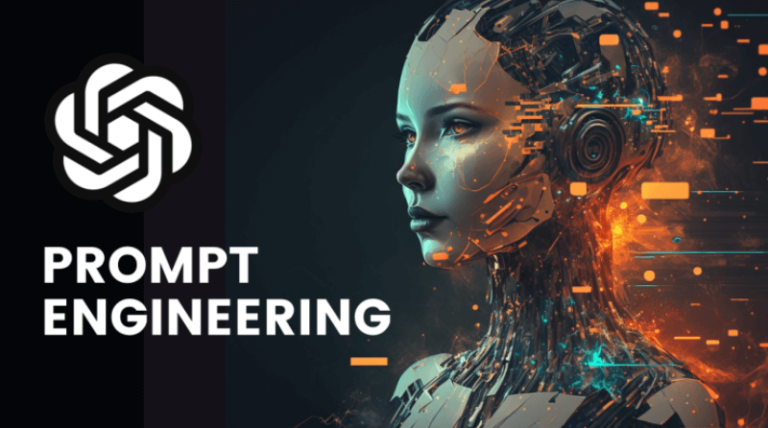AI Ethics and Bias
Usage of AI has increased tremendously and the results it gives us are based on the data it has. The credibility of results can be questioned as it can be influenced or biased and even data can be wrongfully used. In order to guarantee that AI technologies are developed and implemented in ways that are equitable transparent and accountable bias and ethics in AI constitute serious issues that require careful consideration. This article explores the ethics and bias surrounding artificial intelligence discusses the various forms of bias highlights the negative effects of unchecked bias and offers seven real-world examples of AI bias.
Ethics and Bias in AI
Concerns about the moral ramifications and potential biases of these potent technologies have grown as a result of the artificial intelligence (AI) field’s quick advances. These biases can then be amplified and sustained by the AI when it makes decisions. Further raising concerns about the opacity and lack of human oversight are the complexity of many AI algorithms which makes it difficult to fully comprehend and explain the reasoning behind their outputs. AI developers, ethicists, legislators and the general public must work together to address these issues in a multidimensional manner. This might involve putting in place strict testing and auditing protocols to find and reduce biases increasing transparency regarding AI systems and creating ethical frameworks and guidelines to control AI development.
Here’s a quick explainer on Biases in AI by Google:
Types of AI bias
There are several ways that bias in AI can appear and they are all caused by various facets of the process of developing and implementing AI. It is essential to comprehend these forms of bias in order to create plans to reduce their effects.
- Information Bias
When unrepresentative insufficient or otherwise skewed data is used to train an AI model it is referred to as data bias. This may occur when prejudice societal stereotypes historical injustices or other biases are reflected in the data. For instance, a facial recognition system may not recognize persons with darker skin tones well if it was trained primarily on photos of people with light skin. AI models that generate erroneous or unfair results may be caused by data bias.
- A bias in algorithms
Algorithmic bias is a result of the algorithm’s own architecture or structure. If the algorithm optimizes for goals that unintentionally favor one group over another or reflects the implicit assumptions of the developers, it may still result in biased results even with unbiased data. For instance, a profit-maximizing algorithm might favor those with higher incomes which would exacerbate economic inequality.
- Human prejudice
The biases imposed by the people who create hone and implement AI systems are referred to as human bias in AI. This covers the prejudices of the decision-makers who choose how AI should be applied as well as the conscious or unconscious biases of the developers. These prejudices may influence the data that AI systems use in their design and the objectives they are intended to accomplish. Human bias can be particularly sneaky because developers frequently fail to recognize it.
- Feedback Loop bias
When an artificial intelligence system’s results confirm the biases found in the data or algorithm this is known as feedback loop bias. Increased police presence in high-risk neighborhoods identified by a predictive policing algorithm for example may lead to an increase in arrests further distorting the data and strengthening the initial bias. This feedback loop has the potential to compound already-existing inequities over time.
Cosequences of Bias in AI
Bias in AI can have serious repercussions that impact people individually in groups and throughout society. These are a few of the main effects:
- Discrimination as well as inequality
Discrimination is one of the most dangerous effects of AI bias. Unfair treatment of people based on their color gender age or other traits may result from biased AI systems. Gender inequality in the workplace is perpetuated for example by an AI hiring tool that gives preference to male candidates over equally qualified female candidates. Long-term consequences for people’s lives and means of subsistence may result from this kind of discrimination.
- Diminished Trust
Trust in these technologies is essential as AI is incorporated into more facets of society. But public trust can be damaged by AI systems that turn out to be unfair or biased. People might start to doubt decisions made by AI, especially in delicate fields like finance healthcare and criminal justice. This lack of confidence may limit the potential advantages of AI technologies and impede their adoption.
- Social injustices are being reinforced
Biased AI systems have the potential to accentuate and preserve current social injustices. For instance, if an AI system used in the criminal justice system has biases towards particular racial or ethnic groups this could result in disproportionate policing or sentencing which would strengthen systemic racism. Biased AI in the medical field can also worsen health disparities by giving some people less access to services or treatments than others.
- Financial Effect
AI bias can have serious financial repercussions as well. Biased AI systems can lead businesses to make less-than-ideal choices like selecting the incorrect applicants focusing on the wrong clients or allocating resources incorrectly. A company’s reputation may suffer along with monetary losses and diminished competitiveness. Broadly speaking biased AI can worsen economic inequality by stifling the chances available to underrepresented groups.
7 cases of AI biases
In order to address these issues it is imperative to comprehend the practical implications of AI bias. These seven instances show how AI bias has had serious repercussions.
- Face recognition technology and racial bias.
Face recognition technology has been subject to criticism for its perceived racial bias. Studies have indicated that individuals of color—particularly Black and Asian people—are more likely than White people to have their faces misidentified by facial recognition software. The National Institute of Standards and Technology (NIST) carried out one such study. Serious moral and legal problems such as false arrests and increased surveillance of minority communities have resulted from this.
- Employing gender-biased hiring algorithms
It has been noted that AI-driven recruiting systems often favor male applicants over female applicants with comparable qualifications due to gender bias. For example, because the AI recruitment tool used by Amazon was trained on resumes submitted over a ten-year period the bulk of which were from men it was discovered that the tool discriminated against women. As a result, the AI system began to favor resumes with terms that were commonly associated with applicants who were male.
- Predictive policing bias
Algorithms used in predictive policing which seek to locate possible hotspots for criminal activity have come under fire for encouraging racial bias. These systems frequently make use of crime data from the past which may reflect and strengthen prejudices already present in law enforcement procedures. Hence over policing and heightened hostilities between the public and law enforcement may arise from predictive policing tendency to disproportionately target minority communities.
- Disparities in healthcare
Although AI systems in healthcare have the potential to completely transform patient care if they are not managed properly they could also make health disparities worse. According to a study that was published in the journal Science an AI system that was used to distribute healthcare resources had a bias in favor of Black patients. Black patients’ needs were consistently underestimated by the algorithm used to predict their healthcare needs compared to those of White patients which led to unequal access to care.
- Prejudice in Credit Rating
It has been demonstrated that bias exists in AI-driven credit scoring systems which denies some groups equal access to credit. For example, studies have shown that certain financial institutions’ algorithms have a higher tendency to reject loans to applicants who identify as minorities even when their financial profiles are similar to those of white applicants. Bias like this has the potential to impede opportunities for upward mobility and maintain economic inequality.
- Content Moderation Predisposition
Artificial intelligence (AI) is used by social media companies to filter content but these algorithms have the potential to remove or misidentify posts. In contrast to posts written in Standard English research indicates that posts written in African American Vernacular English (AAVE) are more likely to be flagged as inappropriate by AI content moderation tools. Minority communities’ ability to express themselves online may be restricted as a result of the disproportionate censoring of their content.
- Bias in Language Translation
AI-driven language translation systems are not immune to bias especially when it comes to handling gender. For instance, it has been discovered that Google’s translation tool perpetuates gender stereotypes by selectively translating words that are gender-neutral into languages that are gendered. For example, the tool might translate doctor as he and nurse as she when translating from a gender-neutral language like Turkish to English which would reinforce traditional gender roles.
As AI continues to influence many facets of our lives ethics and bias in AI are important concerns that need to be addressed. In order to create AI systems that are just open and accountable it is imperative that we comprehend the different forms of bias and their effects. The examples in this article show how AI bias affects real-world situations highlighting the need for constant monitoring ethical supervision and regulation in the advancement and application of AI technology. In order to reduce AI bias industry stakeholders need to work together to develop more representative and inclusive data sets develop algorithms that give priority to fairness and put in place reliable testing and validation procedures. Furthermore, a more diverse AI development community can lessen the possibility that bias will seep into AI systems. In order to guarantee that AI is a tool for good rather than a cause of harm it is crucial that we stay dedicated to moral standards that put everyones welfare first as the technology advances. We can maximize the benefits of artificial intelligence while lowering its risks by proactively addressing AI ethics and bias which will ultimately lead to the creation of a society that is more just and equal.




